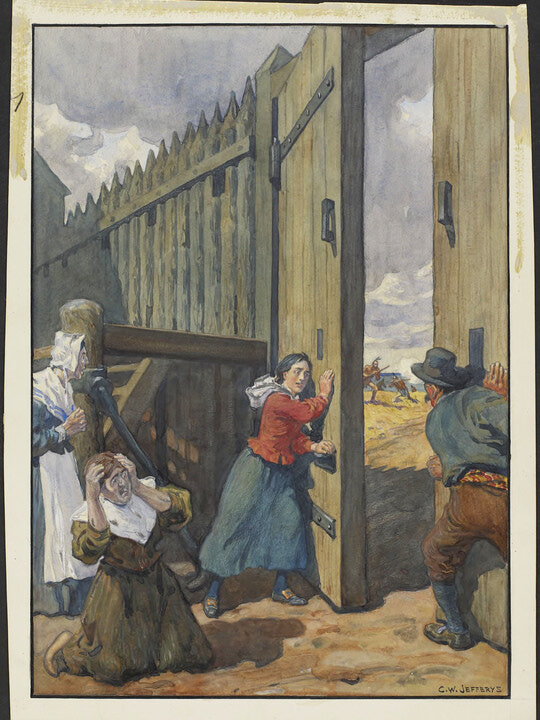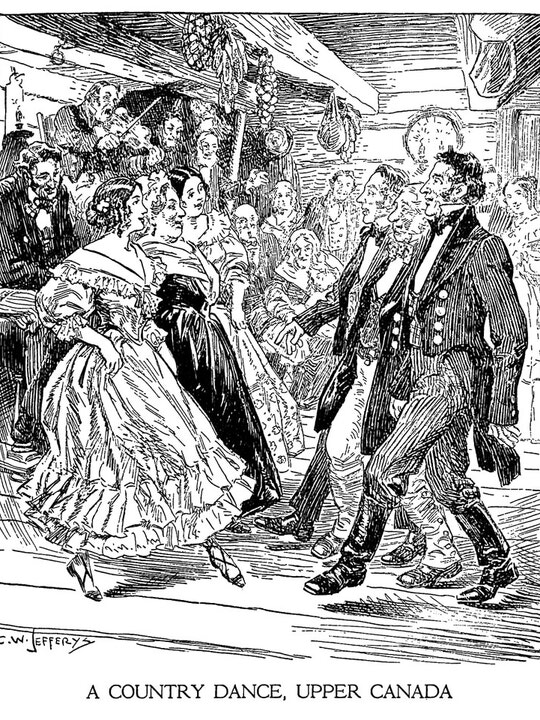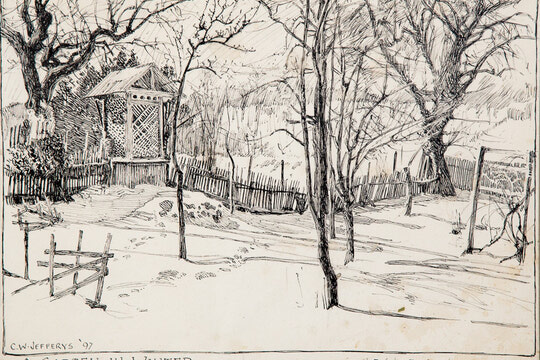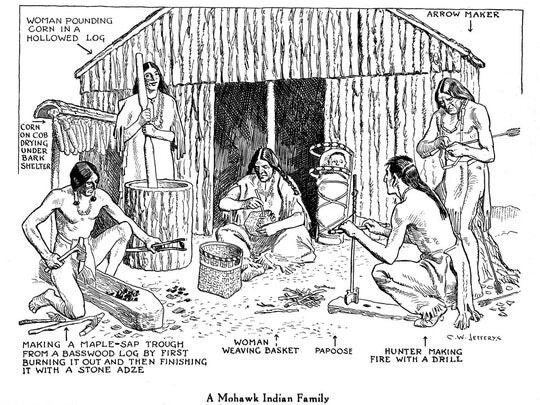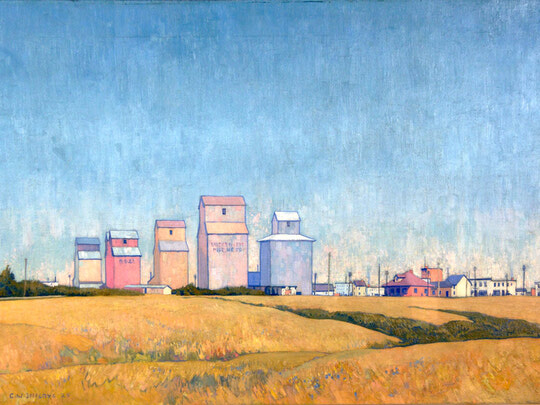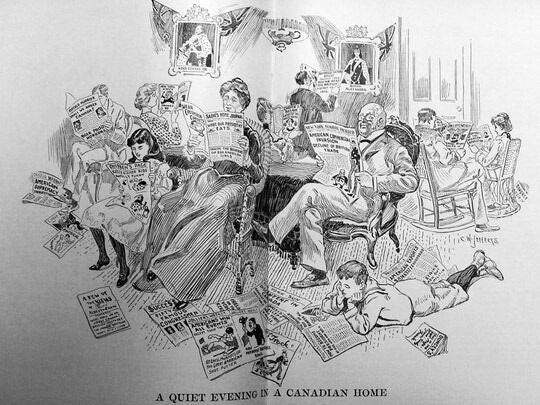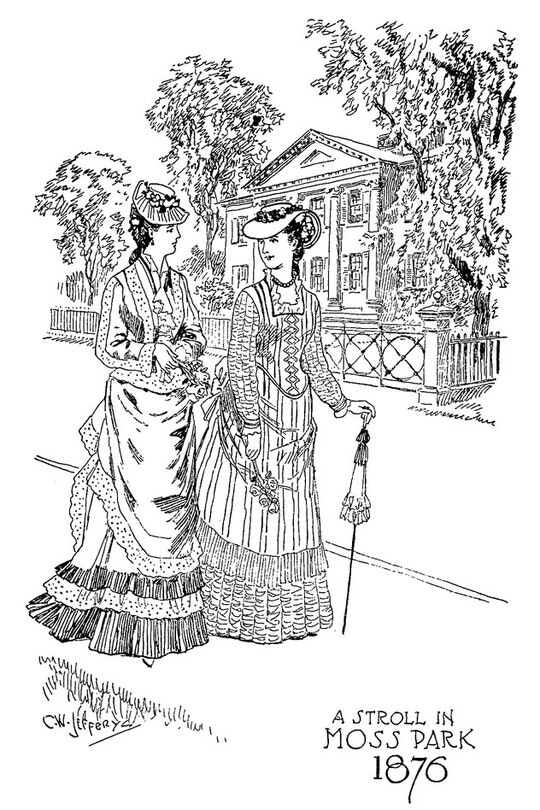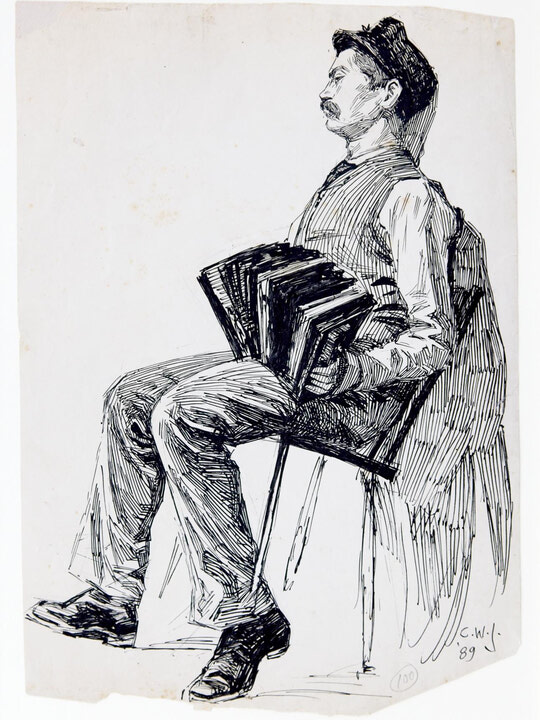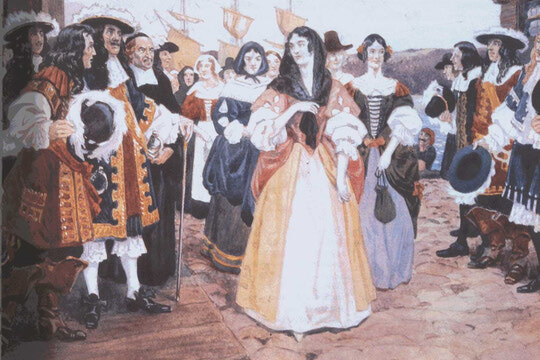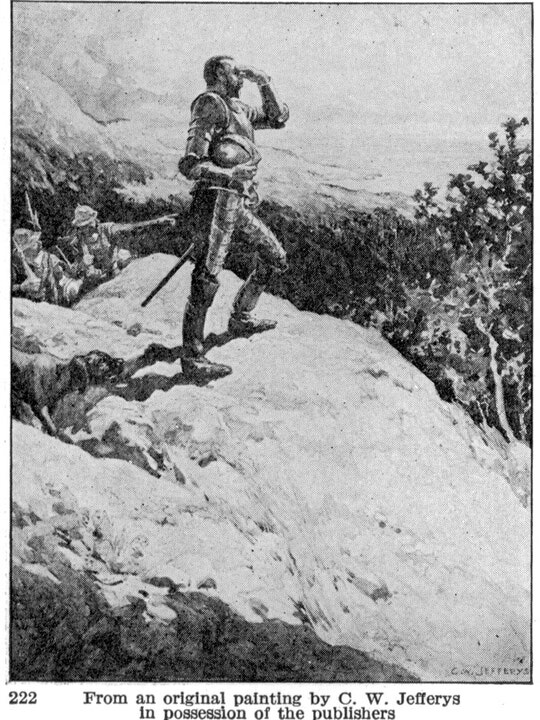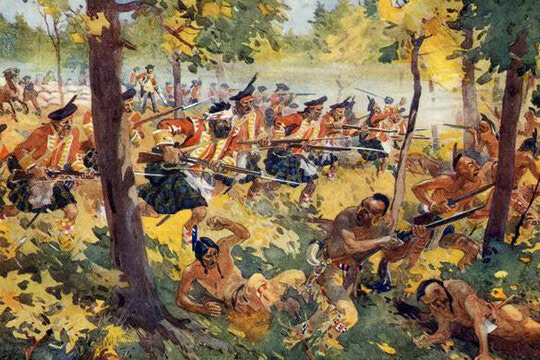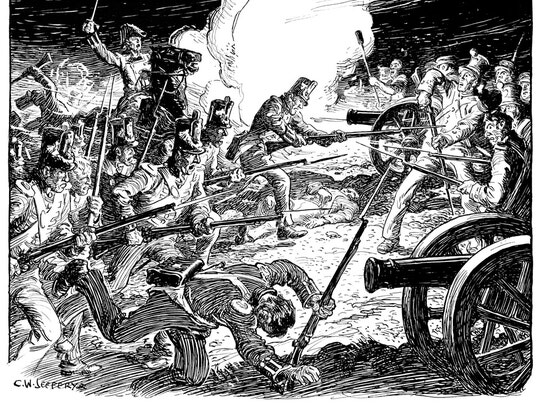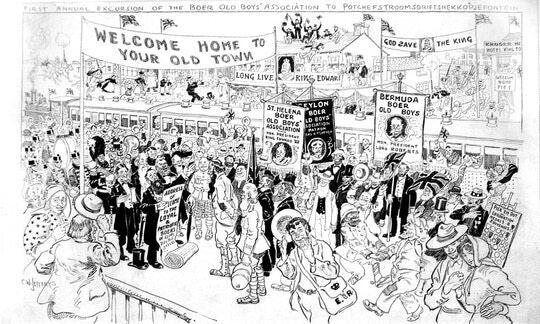Browse the Catalogue
As she neared the gate, an Indian, who had outstripped his companions, caught the kerchief that covered her shoulders, but she loosed herself, and rushing in, with the aid of the manservant, she slammed and bolted the gate fast.
Life in the early days was not all toil or warfare. There was much rude comfort, hospitality and good living, and the pioneers had their times of gaiety and diversion.
The conversion of the Indians to Christianity was one of the earliest and most important objects of the French in Canada. Champlain, who was sincerely pious, declared that the salvation of one soul was of more value than the conquest of an empire.
Woman pounding corn in a hollowed log.
Corn on cob drying under bark shelter.
Arrow maker.
Making a maple sap trough from a basswood log by first burning it out and then finishing it with a stone adze.
Woman weaving a basket.
Papoose.
Hunter making.
Based on sketches made of Gleichen, Alberta, in July 1924. Called A Prairie Town (Five Grain Elevators) in Jefferys record of works on hand.
"'A Prairie Trail' by C.W. Jefferys, full of glorious Canadian sunlight and fairly reeking with truth of character of our great west." Beatty, J.W. "Canadian art appreciated." In Canadian Courier, Dec. 28, 1912, p. 6. Illus.
But there could be no permanent homes without wives, and unmarried women were scarce in Canada. So, in the next few years, several companies of marriageable young women were shipped by the king to find husbands in the colony.
When Manitoba became a province, many of the Metis of the Red River valley, inheriting the roving and independent habits of their ancestors, the Indians and voyageurs of the old fur-trading companies, were unable to adjust themselves...
As the night attack at Stoney Creek stemmed the invasion of Upper Canada in the early summer of 1813, so the fight in the woods of Chateauguay checked the expedition against Lower Canada in the fall of the same year...
The spring of 1813 was a time of gloom and disaster in Upper Canada. The war with the United States pressed heavily on the country. Brock, the inspiration of its defence, had been killed at Queenston in October. York...
The day was blazing hot. Montcalm threw off his gold-laced coat and, in his shirt sleeves, took a position from whence he could see nearly all the field of battle.
The native tribes of this western country had for years opposed the invasion of their hunting grounds by the United States. Their principal leader was Tecumseh, a chief of the Shawnees, who, with his brother...

